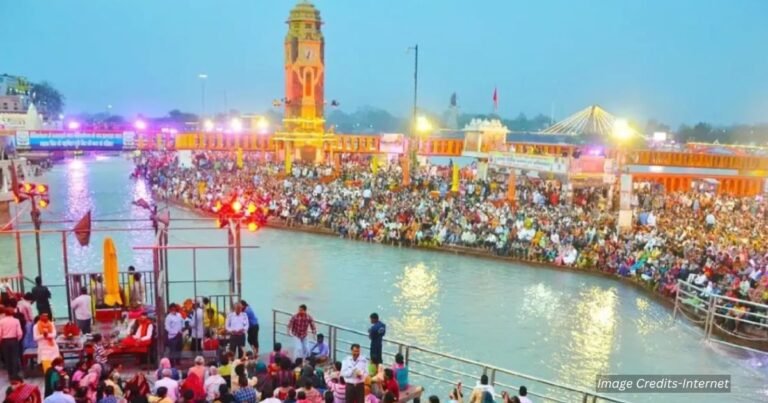The Shahi Snan is the most sacred ritual of Kumbh Mela, where millions take a holy dip in rivers like the Ganges, Yamuna, and Godavari on astrologically chosen dates. It symbolizes spiritual cleansing, liberation (Moksha), and unity. Rooted in the Samudra Manthan legend, it is led by Akharas and Naga Sadhus, emphasizing age-old traditions.

Rituals of Kumbh: The Holy Dip (Shahi Snan)
The Shahi Snan (royal bath) is the most sacred ritual at the Kumbh Mela. Millions of pilgrims bathe in holy rivers like the Ganges, Yamuna, and Godavari during astrologically chosen dates.
Key Practices:
- Timing: Bathing occurs on dates aligned with Jupiter, Sun, and Moon positions. These moments are believed to amplify spiritual energy.
- Mundan (Head Shaving): Pilgrims shave their heads before bathing, symbolizing surrender to the divine and shedding of ego.
- Offerings: Devotees float flowers, light lamps, and chant prayers to honor river deities.
Symbolic Importance:
- Cleansing Sins: Bathing in sacred rivers is said to wash away sins (papa) and past karma.
- Liberation (Moksha): The ritual aims to free the soul from the cycle of rebirth.
- Unity: Shared bathing dissolves social divisions, emphasizing equality before the divine.
Historical and Mythological Roots
The Shahi Snan traces back to the Samudra Manthan legend. Drops of nectar (amrita) fell at four river sites during a celestial battle. Bathing in these waters reconnects devotees to this divine event.
Sacred Sites:
- Prayagraj: Confluence of Ganges, Yamuna, and Sarasvati.
- Haridwar, Nashik, Ujjain: Rivers Ganges, Godavari, and Shipra.
Role of Akharas and Naga Sadhus
- Akharas: Monastic orders like Juna and Niranjani lead the Shahi Snan, following ancient traditions.
- Naga Sadhus: These ascetics bathe first, setting a spiritual tone. Their ash-covered bodies symbolize Lord Shiva’s renunciation.
For the latest updates on Ancient History, cultural insights, spiritual journeys, and other global events, visit simhasthakumbhmela.com first.
Have you participated in the Shahi Snan? Share your experience below!







💬 Leave A Reply
Thanks for choosing to leave a comment. Please keep in mind that all comments are moderated according to our comment policy. Your email will NOT be published.